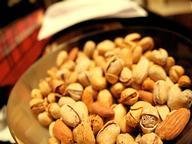Quiz Answer Key and Fun Facts
1. Spumoni - an Italian ice cream dessert
2. Marron glacé - a French morsel of sugar coated yumminess
3. Ricciarelli - a macaroon-style biscuit from Siena
4. Khoresh-e Fesenja - an Iranian stew
5. Frangelico - an Italian liqueur
6. Pesto - an Italian basil, garlic and nut sauce
7. Dotori guksu - a Korean noodle soup
8. Frangipane - a sweet filling used in cakes and pastries
9. Nutella - a chocolate and nut spread
10. Amaretto - an Italian liqueur
Source: Author
Tizzabelle
This quiz was reviewed by FunTrivia editor
WesleyCrusher before going online.
Any errors found in FunTrivia content are routinely corrected through our feedback system.

